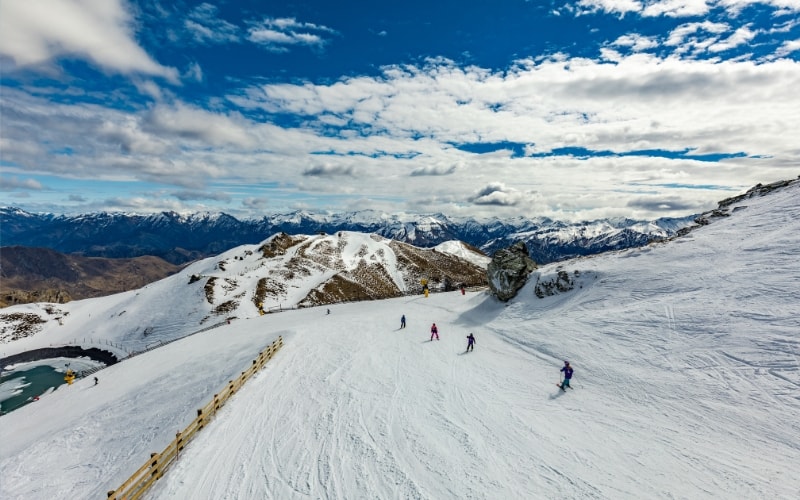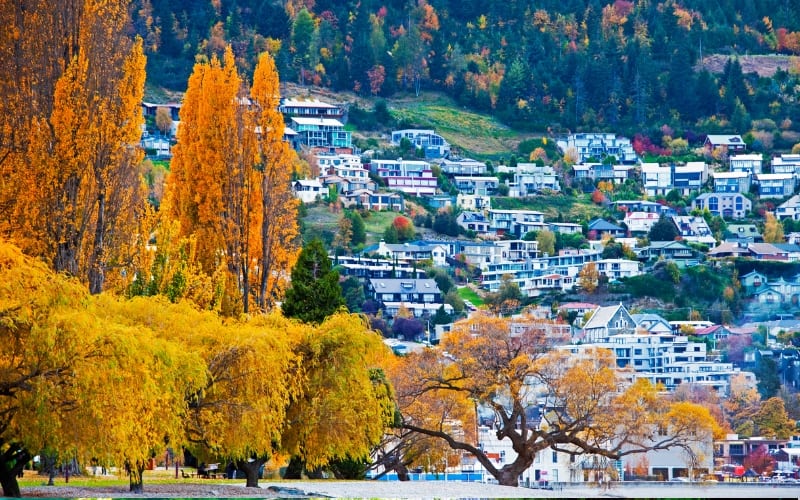New Zealand is a land of breathtaking landscapes, diverse ecosystems and unique weather patterns. It’s also a popular place to move to, especially if you are relocating from the UK. When considering a move to New Zealand, it’s important to understand the climate variations across the country.
The climate in New Zealand is different from that in the UK, but it’s also completely different from the climate in neighbouring Australia, which some people don’t realise. In fact, the climate changes when you move from one part of New Zealand to another. From the subtropical north to the snowy peaks in the south, New Zealand offers a climate for everyone.
But the good news for people moving from the UK is that New Zealand’s climate is generally warmer and sunnier than the UK but somewhat familiar and easy to adapt to.
What to Expect from New Zealand’s Seasons

When you move to New Zealand, you can expect four seasons, similar to the UK has four clear seasons. It’s important to remember that New Zealand is in the Southern Hemisphere, meaning that each season falls at a slightly different time than it does at home. For example, summer spans from December to February, and the UK’s warmest months are New Zealand’s coldest.
Summer (December – February)

New Zealand’s summer is the perfect time to explore the great outdoors. Expect warm temperatures, plenty of sunshine and an abundance of outdoor festivals and events. This is the ideal time for hiking, beach trips and exploring New Zealand’s stunning national parks.
Autumn (March – May)
Autumn in New Zealand brings cooler temperatures and vibrant foliage. It’s an excellent time for wine enthusiasts, as vineyards across the country prepare for harvest. The changing colours of the landscape make this a picturesque season for exploring a lot of what the country has to offer.
Winter (June – August)

Winter is a fantastic time for skiing and snowboarding in the South Island’s alpine regions. In the North Island, you’ll experience milder winters with less snow, but it’s still a great time for indoor cultural activities and enjoying hot springs.
Spring (September – November)
Spring is a time of renewal and rejuvenation in New Zealand. The weather starts to warm up, and the landscape bursts with blossoms and greenery. It’s an ideal season for hiking and outdoor adventures before the summer crowds arrive.
New Zealand is split into two large islands, North Island and South Island. Though close in proximity, they have two very distinct climates and varying seasons. The North Island is classed as being subtropical, whilst the South Island often experiences a range of seasons in one day.
This means that the climate in the North Island’s Auckland is very different to the climate of Christchurch, located on the South Island. This is something to consider when you are planning where to move to.
North Island’s Climate: Subtropical Bliss
Auckland
If you are headed to the northernmost tip of New Zealand, expect warm temperatures. Auckland, the largest city in the country, enjoys mild and humid summers with temperatures reaching a comfortable 24°C, followed by cool and damp winters.
Even during the winter months, temperatures rarely drop below 11°C. Rainfall is spread throughout the year, making it a relatively wet city. Summers are perfect for beach lovers, while winters are great for exploring the city’s vibrant culture.
Wellington
As you move south to the capital city, Wellington, the climate becomes more temperate. Wellington is known for its wind, so it’s certainly one of the windier places to move to in New Zealand. Summers are warm, while winters are cooler with the occasional frost.
Wellington is slightly cooler than Auckland, with temperatures dropping to between 8°C to 12°C during the winter. Rainfall is evenly distributed throughout the year, in the same way that it is in the UK.
South Island’s Climate: Four Seasons in a Day
Christchurch
If you are drawn to the South Island’s largest city, Christchurch, prepare for a distinct four season climate.
Summers are warm, with plenty of sunshine, while winters are cooler with occasional snowfall.
You can expect temperatures of between 17°C to 22°C during the summer but things get a lot colder during the winter, with temperatures dropping down to close to freezing.
The city is famous for its gardens and outdoor activities, giving you the perfect chance to explore the great outdoors throughout the year.
Queenstown
If you are a fan of winter sports, Queenstown is the place to be. Nestled in the Southern Alps of New Zealand, Queenstown experiences a cold alpine climate.
Winters are snowy and ideal for skiing and snowboarding, while summers are mild and perfect for outdoor adventures like hiking and bungee jumping.
In the summer, temperatures can reach anywhere from 15°C to 25°C, providing what a lot of people consider to be the perfect summer weather. It’s a different story in winter though, where temperatures around -2°C are common.
Dunedin
Head to the southeast, and you will find Dunedin, a place known for its unique climate. Dunedin has cool, temperate weather with brisk winters and mild summers.
It’s a great place to experience the changing seasons of New Zealand, without having to worry about extreme temperatures. It can go from between 14°C to 18°C in the summer, to lows of 1°C to 5°C in the winter.
Planning Your Move to New Zealand

New Zealand’s climate varies significantly depending on the region and season. Whether you prefer the subtropical warmth of the North Island or the alpine wonders of the South Island, New Zealand offers a climate for every taste.
So, when planning your move to this unique country, consider the climate that suits your lifestyle and adventure preferences. Once you have done that, it’s time to organise getting your belongings from A to B, and this is where United International Removals comes in.


